Best JSON Tools to Buy in November 2025

Json for Beginners: Your Guide to Easily Learn Json In 7 Days (Programming Languages)



Introduction to JavaScript Object Notation: A To-the-Point Guide to JSON


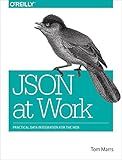
JSON at Work: Practical Data Integration for the Web


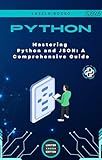
Mastering Python and JSON: A Comprehensive Guide: From Basics to Advanced Techniques: Parsing, Manipulating, and Creating JSON Data with Python (Micro Learning | Python Book 4)



Dan Gookin's Guide to XML and JSON Programming



Python Standard Library by Exercises: Explore modules such as os, json, re, ftplib, imaplib, threading, pickle, socket, random, secrets and more.



JavaScript All-in-One For Dummies


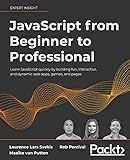
JavaScript from Beginner to Professional: Learn JavaScript quickly by building fun, interactive, and dynamic web apps, games, and pages


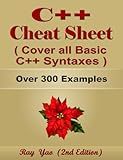
C++ Cheat Sheet, Syntax Table & Chart, Complete Reference Guide by Examples: C++ Programming Syntax Book, Cover all Basic C++ Syntaxes, Quick Study Workbook


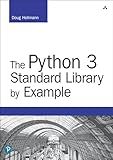
Python 3 Standard Library by Example, The (Developer's Library)


In Delphi, you can create a JSON array without a name using the TJSONArray class from the System.JSON unit. Here's the approach to achieve this:
- Include the System.JSON unit in your uses clause.
uses System.JSON;
- Declare a variable of type TJSONArray.
var jsonArray: TJSONArray;
- Create an instance of the TJSONArray class.
jsonArray := TJSONArray.Create;
- Add elements to the JSON array using the AddElement method.
jsonArray.AddElement(TJSONNumber.Create(123)); jsonArray.AddElement(TJSONString.Create('Hello')); jsonArray.AddElement(TJSONBool.Create(True));
- Convert the JSON array to a string using the ToString method.
jsonString := jsonArray.ToString;
The resulting JSON string will be:
[123,"Hello",true]
Note that the JSON array created doesn't have a name, as it is represented by square brackets. Each element within the array is separated by a comma.
How to convert a JSON array to XML in Delphi?
To convert a JSON array to XML in Delphi, you can use the Xml.XMLDoc unit along with the System.JSON unit. Here's a step-by-step guide on how to do it:
- Add the Xml.XMLDoc and System.JSON units to your uses clause.
uses Xml.XMLDoc, System.JSON;
- Create a function that takes a JSON array as input and returns an XML string.
function ConvertJSONArrayToXML(JSONArray: TJSONArray): string; var XMLDocument: IXMLDocument; RootNode, JSONNode: IXMLNode; I: Integer; begin XMLDocument := TXMLDocument.Create(nil); XMLDocument.Active := True;
RootNode := XMLDocument.AddChild('root'); // Add a root node
for I := 0 to JSONArray.Count - 1 do begin JSONNode := TJSONNode.Create(JSONArray.Items[I]); // Convert each JSON item to a JSON node JSONNode.GenerateNodes(RootNode); // Generate the XML nodes corresponding to the JSON node end;
Result := XMLDocument.XML.Text; // Get the XML string representation end;
- Call the ConvertJSONArrayToXML function with your JSON array.
var JSONArray: TJSONArray; XMLString: string; begin // Assuming you already have a JSON array called JSONArray // ...
XMLString := ConvertJSONArrayToXML(JSONArray);
// Now you can use or save the XML string as needed end;
This code will create an XML document with a root node and generate XML elements and attributes corresponding to each JSON node in the array.
What is the memory consumption of a JSON array in Delphi?
The memory consumption of a JSON array in Delphi depends on several factors such as the size of the array, the complexity of the JSON structure, and the memory management settings of the Delphi compiler.
In Delphi, a JSON array is typically represented as an instance of the TJSONArray class provided by the System.JSON unit. Each element in the array is stored as a JSON value (TJSONValue) within the TJSONArray object.
The memory consumption of a JSON array can be calculated as follows:
- The base memory consumption of the TJSONArray object includes the size of the object itself, which contains various metadata and bookkeeping information.
- Each element in the array requires memory to store the associated JSON value. The memory consumption of a JSON value depends on its type (e.g., string, number, boolean) and the data it represents. For example, a string value requires additional memory to store the characters of the string.
- If the JSON array contains nested objects or arrays, additional memory will be consumed to represent the nested structures recursively.
To estimate the memory consumption of a JSON array in Delphi, you can use the following approach:
- Determine the number of elements in the array.
- Estimate the memory consumption of each element based on its data type and complexity.
- Multiply the memory consumption of each element by the number of elements in the array.
- Add the base memory consumption of the TJSONArray object.
Keep in mind that this is a rough estimate as memory consumption can vary depending on the specific implementation details and settings of the Delphi compiler.
How to search for a specific element in a JSON array in Delphi?
To search for a specific element in a JSON array in Delphi, you can use the REST.JSON unit from the Delphi RTL. Here is an example of how you can perform the search:
- Import the necessary units:
uses System.JSON, REST.JSON;
- Define a sample JSON string and parse it into a TJSONValue:
var jsonString: string; jsonArray: TJSONArray; jsonObj: TJSONObject; searchKey: string; searchValue: string; i: Integer; begin jsonString := '[{"name":"John", "age":30}, {"name":"Alice", "age":25}, {"name":"Bob", "age":35}]'; jsonArray := TJSONObject.ParseJSONValue(jsonString) as TJSONArray;
- Iterate through the JSON array and search for the desired element:
searchKey := 'name'; searchValue := 'Alice';
for i := 0 to jsonArray.Count - 1 do begin jsonObj := jsonArray.Items[i] as TJSONObject; if jsonObj.GetValue(searchKey).Value = searchValue then begin // Found the element ShowMessage('Element found at index ' + i.ToString); Break; end; end;
Remember to handle exceptions and free the JSON objects when you are done with them.
This is a basic example of searching for a specific element in a JSON array. You can modify it according to your specific JSON structure.
